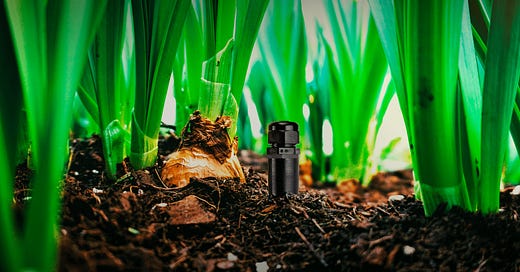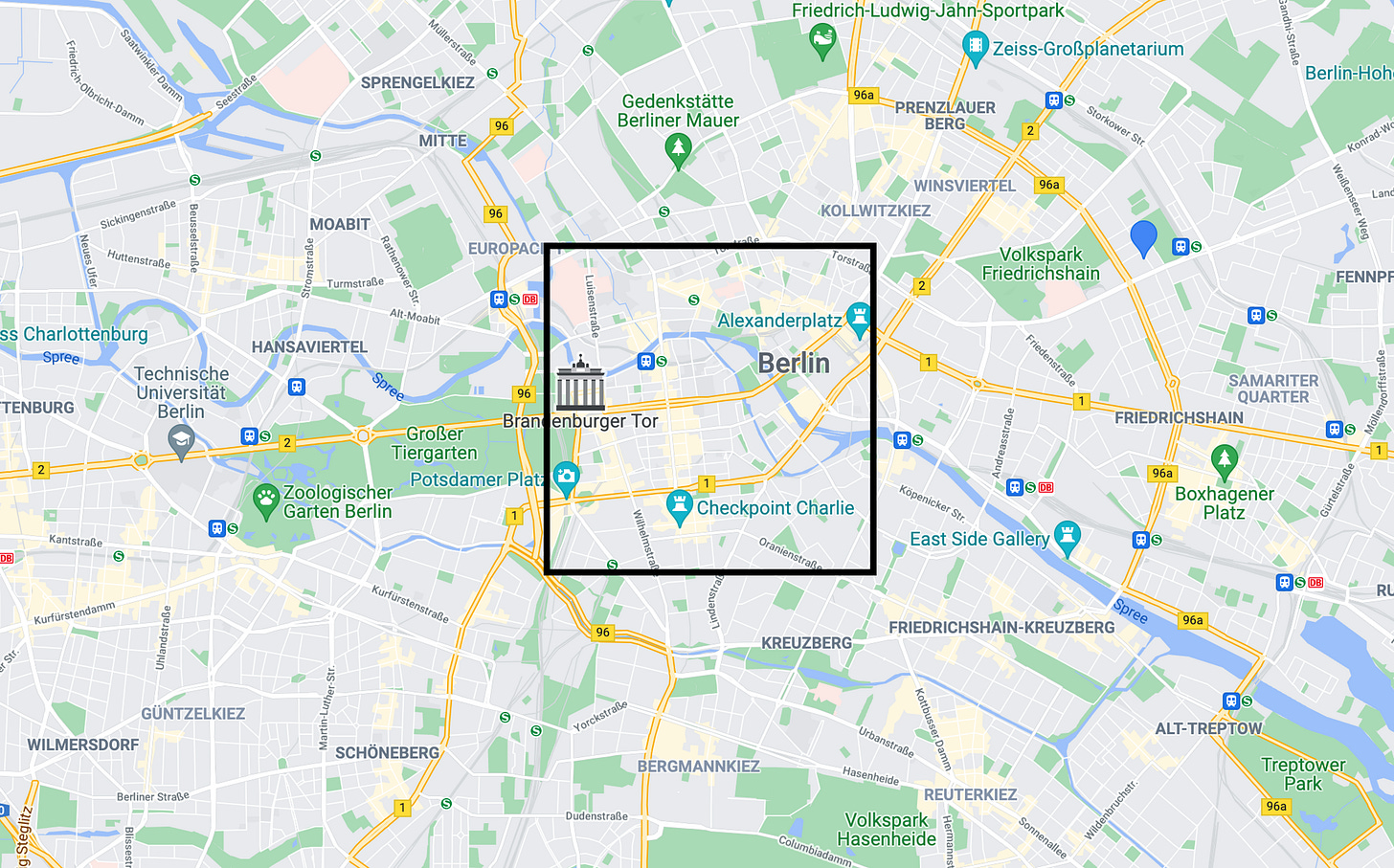🌍 Generating electricity from soil #02
Sustainable banking, pulling CO2 out of the ocean, emissions from web traffic
Hi!
Welcome to the second edition of the 'tings with impact newsletter 🌍
This week we are looking at Tomorrow a sustainable bank, Bioo who have invented a battery that generates electricity from soil, and Heimdal who extract CO2 from the ocean to produce carbon-negative construction materials.
As a little 'ting we'll also look at the carbon impact that our web traffic can have!
To receive this in your inbox every other Thursday hit the subscribe button below
💰 Tomorrow - A bank that funds sustainable projects
A big source of contribution to the climate chaos comes from the institutions that are actually financing the companies in harmful industries such as oil, gas and coal. Banks have invested a total of $3.8 trillion into fossil fuels from 2016-2020! JP Morgan Chase holds the title for being the world worst bank for fossil fuels with Barclays being the worst in Europe. Imagine all the effort you go through to become more sustainable by buying organic produce, switching to eco friendly detergent or reducing meat consumption, for it to then be negated because the bank where you deposit your money funds a new coal power plant. Quite sad.
All is not lost though, as there are initiatives to reduce the climate impact of banks. 55 banks from 28 countries, including Barclays, have joined the UN net-zero banking alliance to reduce their carbon emissions to net zero by 2050. Members include major banks such as Deutsche Bank, HSBC, BNP Paribas, UBS and Morgan Stanley just to name a few. This means that all members have committed to transitioning all operational and attributable greenhouse gas emissions from their lending and investment practices to net zero . Having so many global banks sign up to this initiative is great... but 2050 is quite far away.
Tomorrow, a new neobank (a bank that operates exclusively online) is already doing this today. They launched out of Hamburg in 2017 and have more than 90,000 customers with €225 million in deposits working towards a better future. For every euro spent using a Tomorrow bank card they protect 1 metre squared of rainforest from deforestation! Rather than lending money to a company constructing a new power plant Tomorrow exclusively funds sustainable projects. They have invested €31.5M in sustainable projects so far. The scale at which Tomorrow is funding things is very small compared to traditional banks but it is a good first step!
Tomorrow raised €3M through a public equity crowdfunding campaign in October 2020, where anyone who was interested could invest money in exchange for a percentage ownership of Tomorrow. They will do another equity crowdfunding campaign starting on the 18th of October.
They’ve also just raised an additional €14M from three impact investors (16.09.21)
🌱 Bioo - Generating electricity from soil
Do you remember doing a science experiment as a kid where you powered a small light bulb using a potato? Well, Bioo are using a similar concept, but instead of sticking electrodes into potatoes to generate power they do it using soil. Electricity is produced as a result of the decomposition of organic substances by microorganisms in the soil. Unlike solar panels that need sun to generate electricity, Bioo's soil batteries work 24/7 as long as the soil has enough water.
This has huge application to power lighting in parks, malls, offices, parking meters, the list goes on. In fact, Bioo have already set-up one of their larger systems in a park on Ibiza to power the lights. Although Bioo's batteries currently can't compete with large Solar farms in terms of output, the founder believes they will do so in the near future. They have already improved their energy outputs more than 1000 times since they started. Imagine if one day you could power an entire home using the soil around it!
The most relevant near-term application of Bioo's batteries is in agriculture. It's predicted that the world will consume 70% more food by 2050. Looking at this from the perspective of farmers, who are a dying breed and are struggling to find enough workers to help out, increasing the food supply by 70% is a monumental task! Luckily, even though the average age of farmers is pushing 60 years old, the industry has been experiencing a big technological push to cope with the lacking workforce.
The idea of precision agriculture, the use of technology such as drones, sensors, and GPS to improve yield, was born in the 1990s and is already expected to grow to a $43.4 billion industry by 2025. According to a sifted article, 90% of the power to run farming sensors comes from traditional chemical batteries, that like the batteries in a computer mouse need to be replaced every so often. Replacing such batteries requires a lot of man-hours and is of course quite wasteful. This is exactly where the application of Bioo's biological batteries shine. The most common thing found on farms is soil... so its a no-brainer to implement soil batteries that work 24/7 and do not deplete. In the same article the founder of Bioo said that the batteries cost less than €1 compared to the €4-10 for chemical batteries. They have already partnered with Bayer Crop Science to power the sensors in 50 million hectares of farm land!
🌊 Heimdal – Pulling CO2 out of the ocean
The second most consumed material on earth after water is concrete! Cement, one of the key ingredients of concrete, is responsible for a whopping 8% of the world's CO2 emissions.
In a video by Bill Gates on how to make concrete green he mentions some pretty heavy facts, 2 trillion extra square feet, 185 Billion square meters for us that use normal units, of new building space will be built by 2060, the equivalent of adding another New York City every month. The predominant ingredient to make these buildings will be cement. We need to find a better way to create such a widely used and polluting substance!
Existing companies tackling the decarbonisation of concrete, including CarbonCure which Bill Gates has invested in, focus on infusing CO2 into cement at the end of the production process. These low-carbon cements are already miles better than traditional forms of cement, but they still don't address the 70% of emissions from the production of the cement itself. To get truly carbon neutral cement this will need to be addressed as well.
That is exactly where Heimdal comes in, they enable the production of carbon neutral cement by extracting dissolved oceanic CO2 (using renewable electricity) as mineral carbonates such as calcium carbonate which is what limestone, one of cement's main ingredients, is made of. Additional carbonates are extracted during this process that can be used for the production of glass, but limestone is the one with the largest potential. This method of CO2 capturing also solves one of the major problems of direct air capture systems (big CO2 vacuums) where the captured CO2 still needs to be stored somewhere, by extracting the CO2 as carbonates rather than gas.
Heimdal are currently building a demo plant outside of Oxford that will have the capacity to store 1 tonne of CO2 per year. They have already partnered with a construction company to build the world's first carbon neutral houses this decade.
🌍 A little 'ting - Emissions from web traffic
I recently read an estimation that by 2030 the electricity demand for information communications technology (ICT) will reach 20% of the global total, which is quite insane!
ICT spans more than just web traffic, but that is where I wanted to dig a little deeper.
I would say that pretty much all of us access the internet through our phones and laptops but have no idea what happens in the background. Data centres, the heart of the worlds largest companies (Apple, Microsoft, Alphabet and Amazon), although much better than factories are still significant polluters. To get a visual reference of the emission impact of our web traffic I took amazon.de as my case study.
I used Website Carbon Calculator to get the carbon insights. It turns out that amazon.de is dirtier dirtier than 65% of web pages that they have tested! The website emits 1.43g of CO2 per visit. With around 500 million monthly visits this comes out to a whopping annual emission of 8,850 tonnes of CO2. To put this in perspective, you would need almost 400,000 trees to offset that, which would cover an area of almost 8 square kilometres.
Numbers are all well and good but to provide a visual reference, this forrest would span from the Brandenburg Gate all the way past the TV Tower in Berlin!
At least the German amazon is hosted using sustainable electricity unlike the .com site which runs on standard electricity.
Bonus: the size of the forrest needed to offset amazon.com’s annual traffic would have to be 10.5x the size at almost 85 square kilometres!
Thank you for making it to the end!
Since I'm lucky enough to already be sending you the first iterations of this bi-weekly newsletter I am more than happy to get some feedback on how to improve, just respond to this email 🤗
If you happened to enjoy reading this, why not send it around to a few friends so that more people can get an insight into what is being done to preserve the future of our planet 🌍
Until next time, much love,
Pascal




